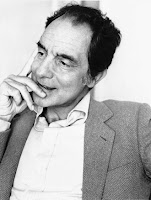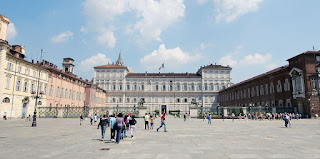Roberto Saviano - writer and journalist
Author of ‘Gomorrah’ who lives under police protection
The author and journalist Roberto Saviano, whose 2006 book Gomorrah exposed the inner workings of the Camorra organised crime syndicate in his home city of Naples, was born on this day in 1979. Gomorrah was an international bestseller that was turned into a film and inspired a TV series, bringing Saviano fame and wealth. However, within six months of the book’s publication, Saviano had received so many threats to his life from within the Camorra that the decision was taken on the advice of former prime minister Giuliano Amato to place him under police protection. Some 12 years later, he remains under 24-hour police guard. He travels only in one of two bullet-proof cars, lives either in police barracks or obscure hotels and is encouraged never to remain in the same place for more than a few days. His protection team includes seven bodyguards. Saviano has written three more books including a collection of his essays and Zero, Zero, Zero - an exposé of the cocaine trade. His latest, published this week, is called The Piranhas. Whereas Gomorrah and Zero, Zero, Zero were non-fiction, The Piranhas is a novel, though one set in Naples with the Camorra at the centre of the story. Read more…
_________________________________________________________________
Andrea Bocelli - tenor
Singer has perfect voice for either opera or pop
Tenor Andrea Bocelli was born on this day in 1958 in La Sterza, a hamlet or frazione of Lajatico in Tuscany. Bocelli, who is blind, had poor eyesight from birth and was diagnosed with congenital glaucoma, but he lost his sight completely at the age of 12 after an accident while playing football. He always loved music and started to learn the piano at the age of six. But after hearing a recording by opera singer Franco Corelli, he set his heart on becoming a tenor. Bocelli won his first singing competition in Viareggio with ‘O sole mio’ at the age of 14. He has since sold 150 million records worldwide and performed for four US presidents, three Popes and the British Royal family. His voice has been acclaimed by critics as perfect for either opera or pop. Bocelli originally studied law and spent one year working as a lawyer, but in 1992 the great Italian tenor Luciano Pavarotti heard a recording of his unique voice performing Italian rock and pop artist Zucchero’s song Miserere and helped his career take off. He sang Miserere with Zucchero during a European tour and performed it at the Sanremo song festival, where he won the newcomer’s section with the highest ever number of votes. Read more…
_________________________________________________________________
Carlo Ubbiali - motorcycle world champion
Racer from Bergamo won nine GP titles
Carlo Ubbiali, who preceded Giacomo Agostini and Valentino Rossi as Italy’s first great motorcycling world champion, was born on this day in 1929 in Bergamo. Between 1951 and 1960, he won nine Grand Prix titles, in the 250cc and 125cc categories, setting a record for the most world championships that was equalled by Britain’s Mike Hailwood in 1967 but not surpassed until Agostini won the 10th of his 15 world titles in 1971. Ubbiali is the second oldest surviving Grand Prix champion after Britain’s Cecil Sandford, who was his teammate in the 1950s. Ubbiali’s compatriot Agostini, who came from nearby Lovere, in Bergamo province, is 75. Ubbiali won a total of 39 Grand Prix races, all bar two of them for the MV Agusta team. Three times – in 1956, 1959 and 1960 – he was world champion in 125cc and 250cc classes, and on no fewer than five occasions, including both categories in 1956, he won the title with the maximum number of points possible under the scoring system. He was also a five-times winner at the prestigious Isle of Man TT festival and six-times Italian champion. Read more…
Home






















